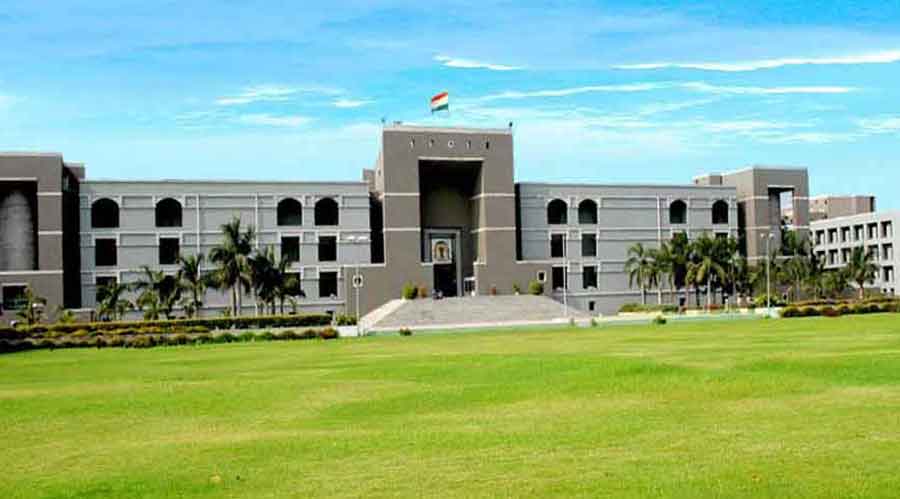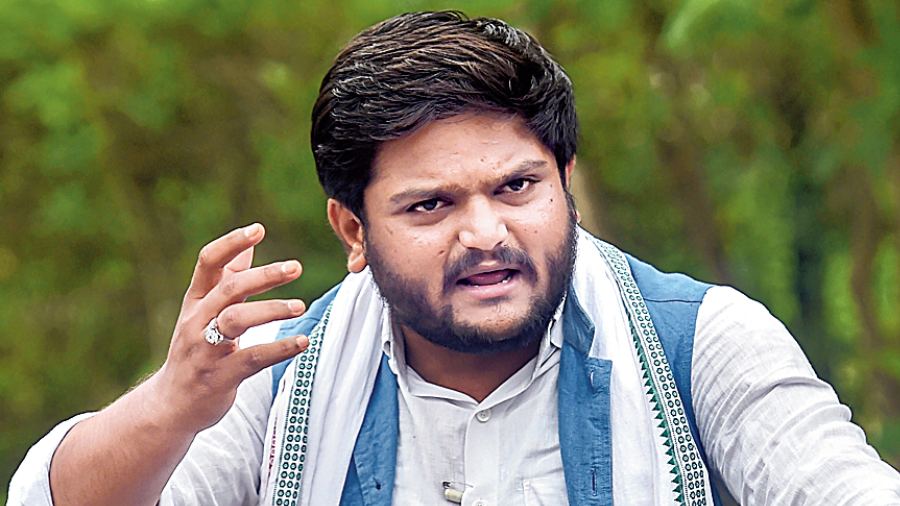For 17 months after the Gujarat genocidal carnage, India’s constitutional courts were silent. The atmosphere inside the courtroom of Justice P.B. Majmudar of Gujarat High Court — where an unusually large crowd of persons had gathered — as senior counsel from Mumbai Aspi Chinoy made forceful and persistent pleas to enforce Articles 14 and 21 on behalf of the managers of Gujarat’s five major relief camps was symptomatic of the hold political currents have inside the courtroom.
That was in April 2002. The petitioners’ effort was to legally enforce a statutory and constitutional obligation: that the State bear the costs of the grain, food and medical supplies to the 168,000 distraught children, women and men inside the relief camps — all Muslims — at Rs 5 per day per person and 30 litres of water per day per person!
The Supreme Court was petitioned in May 2002, within three months of the violence, with three substantive challenges invoking Article 32 (right to constitutional remedies). Only one among them survived the vagaries of the system.
Relying on the findings of the final report of the National Human Rights Commission (NHRC) and of the chief election commissioner (CEC), a women’s parliamentary committee and over three dozen affidavits filed by survivors, the case, backed by Citizens for Justice, which had citizens from Ahmedabad and Mumbai as petitioners, prayed for the transfer of investigation and trial in nine major riot cases.
It was only in July 2003, 17 months after the carnage, and with the star witness in the Best Bakery case making a public allegation of witness intimidation, that the wall of unconcern was breached. Thereafter, for some glorious, heady months, the hearings were swift.
It looked as though the mighty had finally been shaken and that path-breaking jurisprudence would emerge and grievous wrongs set right.
A significant marker came on April 12, 2004, when, in a bold pronouncement, the Best Bakery trial was transferred out of Gujarat. Fourteen people had been killed in the bakery on the night of March 1-2 in Vadodara. The trial court had acquitted all the accused and the high court (despite the Supreme Court’s watchful eye) had confirmed the verdict. The NHRC had flagged the violence as one of the 10 worst among the 300 incidents in Gujarat, and said it deserved a reinvestigation and transfer of the trial.
Much was said in the 40-page order of April 12, 2004, that judicially summed up the “scale of complicity of the government, the investigation, the prosecution and the courts including the high court”. (K.G. Kannabiran, Communalism Combat, April-May 2004.)
This judgment, remarkable in its righteous indignation and frankness, regretted the denial of justice to a minority under attack. It also exposed and showcased brilliantly the ills that had beset the criminal justice system.
This judgment, in Zahira Habibullah Shaikh & Anr (Citizens for Justice and Peace) v/s State of Gujarat, 2004, minced no words when it came to the state government. “Modern-day ‘Neros’ were looking elsewhere when Best Bakery and innocent children and women were burning and were probably deliberating how the perpetrators of the crime can be saved or protected,” it said.
It also drew an equivalence between mob terror and bomb terror: “The fanatics who spread violence in the name of religion are worse than terrorists and more dangerous than an alien enemy.”
Truer still in the India of 2022.
Today, 20 years after the carnage that claimed 2,000 lives in retributory violence following the Godhra mass arson of February 27, 2002, it is this verdict that needs to be carefully revisited to comprehend the Gujarat genocidal carnage through a legal lens.
This verdict raises important questions about the roles of the trial court and the high court, public prosecutors (“prosecutors functioned more like defence counsel”), investigating agencies (“perfunctory and far from impartial”), and the State.
But did even this pronouncement go far enough? Criminal bouts of communal violence, sanctioned and sponsored by the State, pose a unique challenge given the inherent conflict of interest: the State prosecuting the State and, by extension, every officer of the prosecuting State (possibly) undertaking every effort to ensure the acquittal of accused officers of the State.
Although the Supreme Court in this verdict invoked those sections of the CrPC (301 and 386, and 311 read with section 165 of the Evidence Act) that do give powers to public prosecutors and the courts to function independently, no guidelines were set within this pronouncement to ensure robust institutional recall for the prevention of recurrence.
Should not the highest court, scathingly underlining as it did the involvement and complicity of wings of the state government, have laid down guidelines for preventing recurrence? Should it not have set guidelines to ensure that religion did not enter the sphere of political government? Should it not have laid down a principle for the trial of these cases under the chapter on public tranquillity, read with the Genocide Convention of 1948, to render complete justice? So that wings of the State face an institutional check against pervasive abuse, not just in the Best Bakery case but in the other incidents of mass killing in Gujarat 2002 and any in the future?
In a parallel case being heard at the time (NHRC and the CJP, the latter petition filed within three months of the carnage), a special bench constituted by the Supreme Court (headed by the Chief Justice of India at the time) stayed nine criminal trials in November 2003, oversaw their investigations and prosecution, and exercised the writ of continuing mandamus — a writ that with institutional faltering and reluctance still holds good.
For these nine trials, time seemed to stand still. We only got a comprehensive order for further investigation by a special investigation team (SIT) in March 2006. The survivors had a mixed experience with the SIT. This team appeared hampered from the start, having key Gujarat officials within it (the names suggested by the survivors were not taken into consideration by the court).
Although some measure of substantive justice was ensured in a couple of cases, even this was patchy. In almost all the cases, crucial documentary evidence was not probed, and any material revealing any premeditation behind the massacres or any organisational connections of the accused was simply not taken into consideration.
It was as if now, despite the stiff observations in the Best Bakery case — those about a wilfully complicit state government — the incidents were being whittled down, diluted, and investigated and prosecuted as separate crimes and not as part of a larger, ominous whole.
The same systemic ills that had repeatedly been flagged in the 2004 verdict (ideologically compliant public prosecutors, etc) became a hurdle to justice in the subsequent trials. Political power played its omnipresent part, with the same forces indicted in 2002 gaining more electoral support.
Is the struggle for justice in the Gujarat carnage a battle half lost or half won? That we ourselves ensured the convictions of 170 people, 124 of whom were sentenced to life imprisonment at the first stage (some of these were later overturned by higher courts), is significant. Other survivors battled and ensured further convictions: in the Ghodasar and Jinjar (14 convicted), Dairol and Bilkis Bano cases. It makes the survivors’ and legal rights groups’ efforts in Gujarat unique.
That said, just as after the Nellie massacre of 1983 and the Sikh mass killings of 1984, almost all the police officers guilty of complicity during the 2002 Gujarat carnage and of subversion of the investigation afterwards have been rewarded with promotions and elevations. The handful of officers who swam against the tide and testified have paid heavily for it. A vindictive State is doing all it can to intimidate and prosecute them, even withholding pensions.
There has also been a differential if not discriminatory sense of justice — between the Godhra accused and those accused in the post-Godhra reprisal killings — in the grant of bail or award of sentences.
Twenty years on, it appears that sparse institutional lessons have been learnt from the 2004 Best Bakery verdict. One jurisprudential breakthrough has been the June 2009 amendment to section 24(8)(2) of the CrPC, granting the witness and complainant the statutory right to participate in a criminal trial (and not be left to the whims of the State as sole pursuer of justice).
But many of the gains of the Best Bakery verdict have been subsequently rendered sterile as the judgment did not leave behind statutory guidelines mandating — in every case of targeted violence against minorities — that investigation and prosecution be so insulated as to ensure substantive justice regardless of geographical location.
Since 2002, we have witnessed full-blown violence (Muzaffarnagar 2013) and ghastly lynchings (of at least 77 Muslims and a few Dalits since May 2014), among others. Yet no lasting lessons have been institutionally learnt from the findings of this truly historic verdict.
This epic pronouncement by the Supreme Court has left a faded legacy. The absence of a systemised institutional recall or memory within the Supreme Court itself has reduced what could have been a monumental systemic impact to a whimper.
The author is the secretary of the Citizens for Justice and Peace (CJP.org.in), an organisation that has represented the survivors of the 2002 Gujarat riots in 68 criminal, civil and constitutional cases












